|
In the south-west corner of the Square of the Corporations a little shrine was inserted, the Shrine of the Altar of the Twins. There is a similar room on the east side of the square. The symmetry suggests that the two shrines were dedicated to related deities, such as the Egyptian gods Isis and Serapis. The shrine is a little rectangular room (4.45 x 3.48 m.). The masonry has been dated to the period of Commodus. Set against the back wall is a brick base (1.70 x 1.35, h. 0.85). Along the walls were benches with marble revetment. The shrine is particularly interesting and still enigmatic because of the find of a marble altar in 1880 or 1881 by Lanciani. The original is now in the Museo Nazionale in Rome. A plaster-cast is in situ. The room was ransacked at an unknown point in time by people who entered through a breach in the west wall. They missed the altar, which was covered by a large piece of the ceiling. The altar measures 0.84 x 0.84 m., and is 1.10 m. high. A container for offerings must have been fastened on top, with lead, because the altar is explicitly called "altar" in an inscription. It may however have been re-used as a statue-base. The four corners are decorated with ram's heads and wreaths. The front has a depiction of Mars, Venus with a goose and Amor, and Hymenaeus, the god of marriage. On the back we see Romulus and Remus, suckled by the she-wolf. They are found by two shepherds, Faustulus and Faustinus. This story is situated near the Palatine (the Lupercal), and the personification of the hill can be seen in the upper left part. In the lower right part is the personification of the Tiber. Jupiter's eagle is present as well. On the sides of the altar are amorini, hauling the weapons and chariot of Mars. The amorini are moving towards the front side of the altar. The altar carries various inscriptions. On the front side, above Mars and Venus:
The people responsible for the altar were Publius Aelius Syneros and his sons Trophimus and Aelianus. Syneros was a freedman of Publius Aelius Trophimus, himself freedman of Hadrian and procurator of Crete. Aelianus was named after the former dominus of Syneros. On the lower part of the front side:
The placing of the altar was approved by the city council, indicating that it was located on important, public ground. On the upper part of the front side, on a narrow ledge:
It seems that the Imperial annona (the food supply of Rome) and the Genius of the guild of the weight-makers and weigh-masters (collegium sacomariorum) are mentioned. The missing six letters are perhaps to be restored as ad Annonam, "at / near Annona". On the upper part of the side with amorini and weapons, on a narrow ledge:
This inscription tells us that the base was in some way a votive gift to Silvanus. On the lower part of the side with amorini and the chariot of Mars:
The altar was dedicated on October 1, 124 AD, the day of the tigillum sororium and Fides populi romani. The reliefs have been dated to the Flavian period (which implies re-use of the base) and Hadrianic period. The first thing we should note is that the altar is not on its original location. It is obviously meant to be seen on all sides, which is hardly possible in the tiny room. Furthermore, the altar was found with the back side turned towards the front, witness an illustration by Lanciani, the name given to the shrine by the excavators, and the orientation of the plaster cast. We should furthermore note the state of preservation of the altar. The back side is preserved quite well, the other sides are damaged severely, and this can hardly be the result of the collapse of the roof of the tiny shrine. The damage, particularly of heads, suggests that the altar, with its references to the Imperial cult, was attacked by Christians in the fourth century AD. The neutral back side, depicting the foundation of Rome, was spared. The authorities may afterwards have placed the altar in the little room, with the more neutral side as front side. We may think here of Ragonius Vincentius Celsus, prefect of the grain-supply, who erected a statue of Roma in front of the theatre. The altar seems to have been dedicated four times. The inscription of Syneros and his sons, the approval of the city council and the Hadrianic date are most likely linked. Because the inscription of Syneros is on a figurative field, it may well be secondary, and added in 124 AD to an altar from the Flavian period (the context of the Square of the Corporations suggests the reign of Domitian). The presumed Flavian altar was dedicated to Mars and Venus. The Hadrianic re-dedication would then be related to the Hadrianic raising of the level of the square. On the narrow top ledge we read that the altar was sacred to the Genius of the weigh-masters. When we accept the completion ad Annonam, then the altar would originally have been located near the temple in the centre of the square, in a setting so that all sides could be seen. A "large foundation of a monument" was found c. 20 m. to the north of the temple, at a level from the first century AD (NSc 1912, 278, with Battistelli-Greco 2002, 405). The temple would have been dedicated to Annona. The representation of the founding of Rome, under the supervision of Jupiter and with reference to the concordia of Mars and Venus, suggests a link with the Imperial cult. On another side of the top ledge we read that the altar was in some way related to a vow to Silvanus. Some link between Silvanus and the weigh-masters is suggested by an enigmatic phrase in an Ostian inscription: Lucius Calpurnius Chius is quinquennal(is) collegi Silvani Aug. maioris quod est Hilarionis iunctus sacomari. Perhaps we should translate: "Lucius Calpurnius Chius ... president of the larger guild of the August Silvanus, which is named after Hilario, member of the guild of the weigh-masters". |
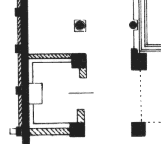 Plan of the shrine. After SO I. |
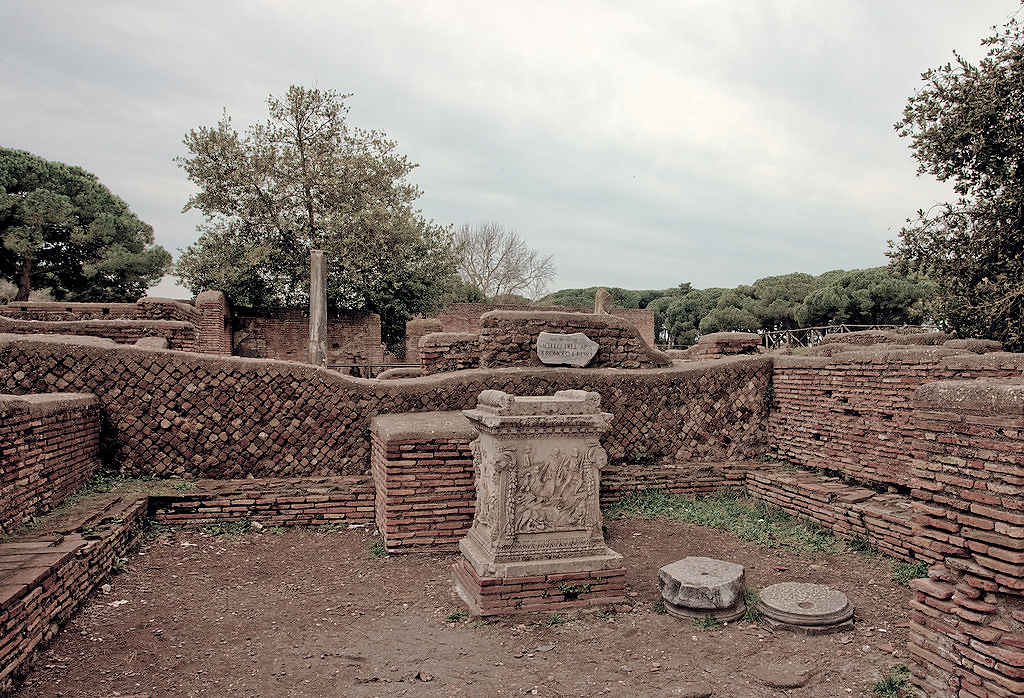
The room seen from the east. Photo: Steve Bynum.
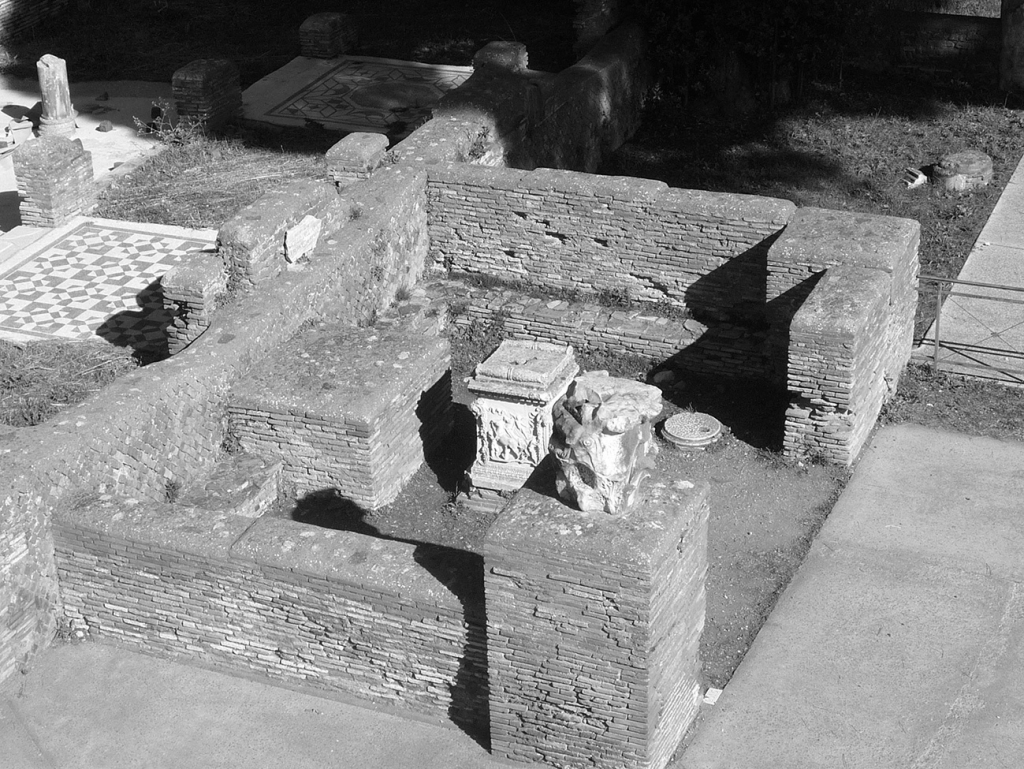
The room seen from the south-east. Van Haeperen 2019, fig. 95.
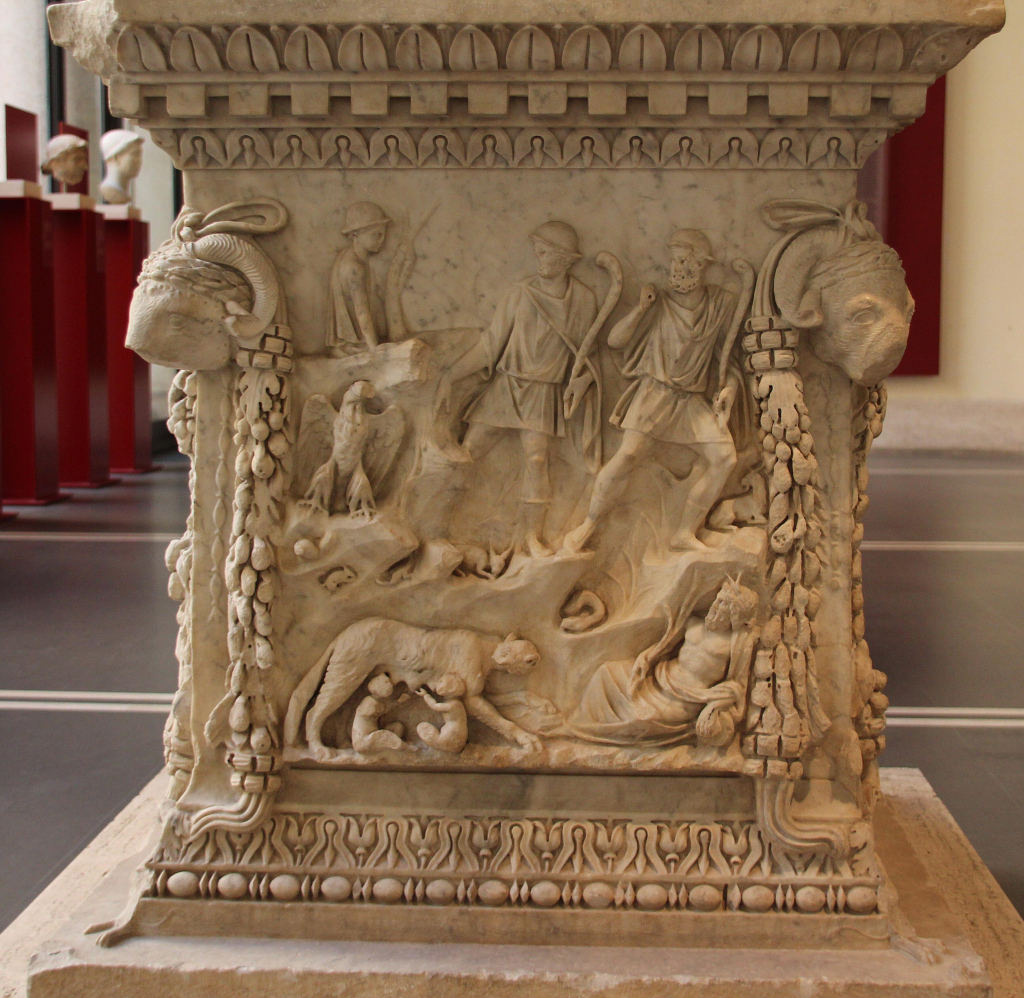
Romulus and Remus suckled by the she-wolf, discovered by shepherds (back side).
Photo: Klaus Heese.
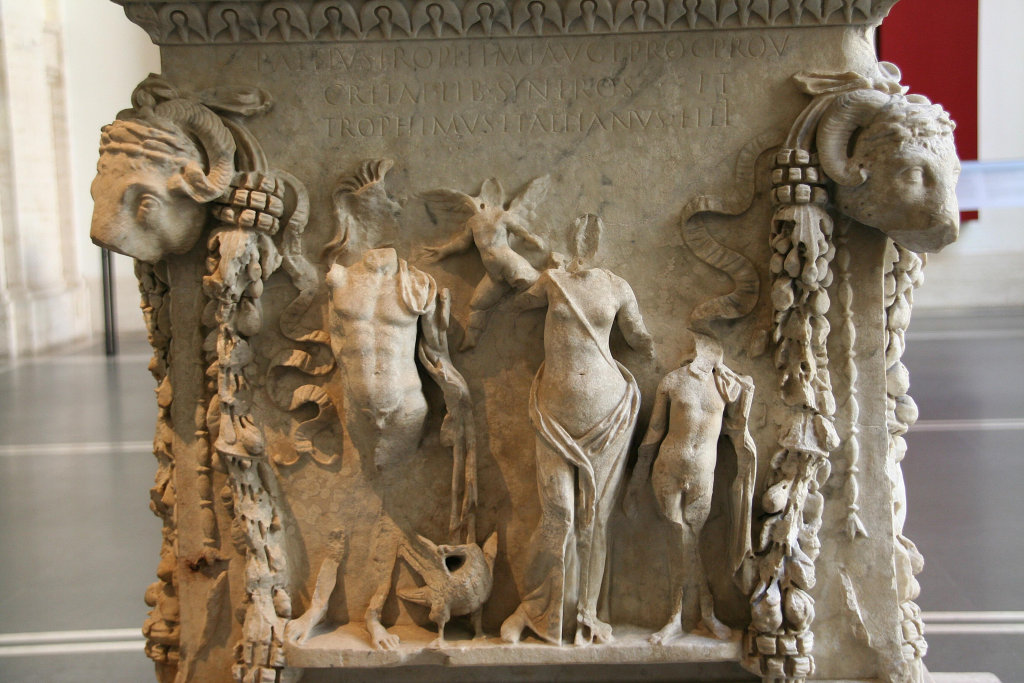
Mars and Venus (front side). Photo: Klaus Heese.
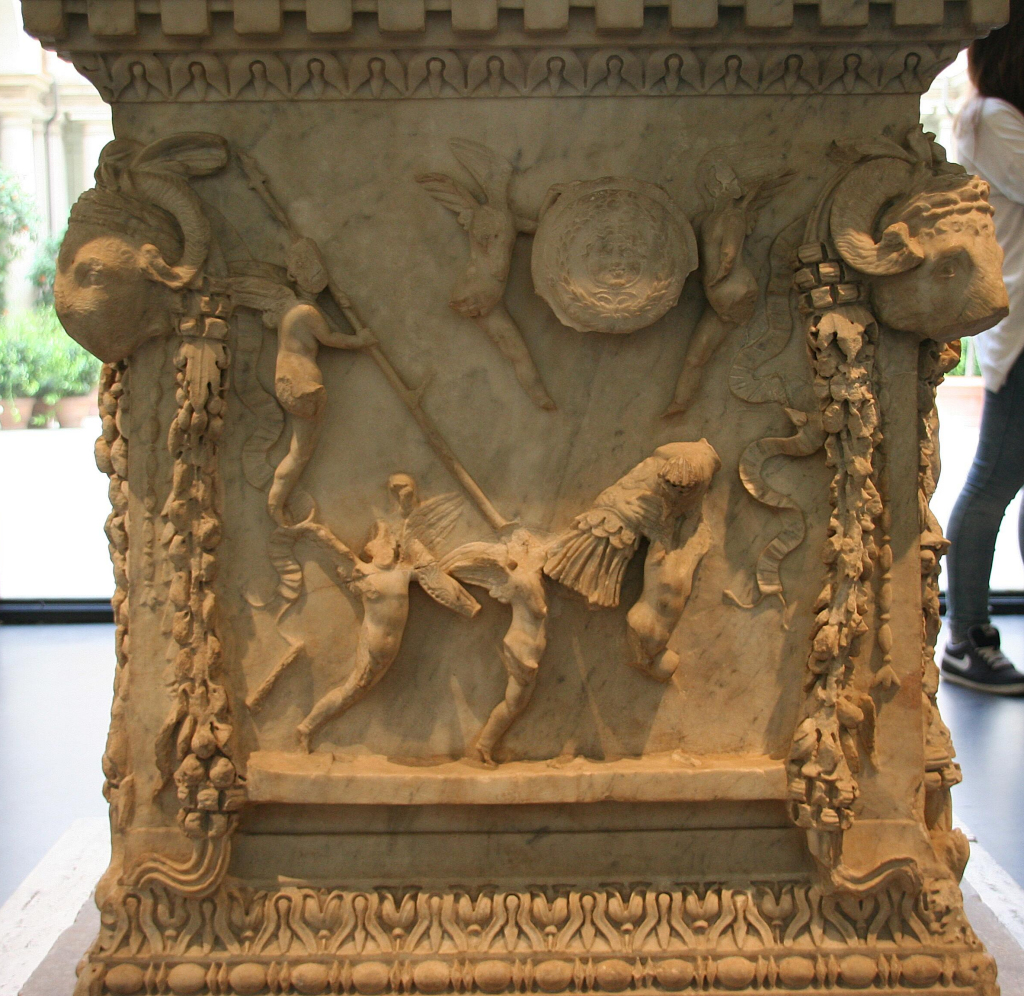
Amorini hauling the weapons of Mars on one of the sides.
Photo: Klaus Heese.
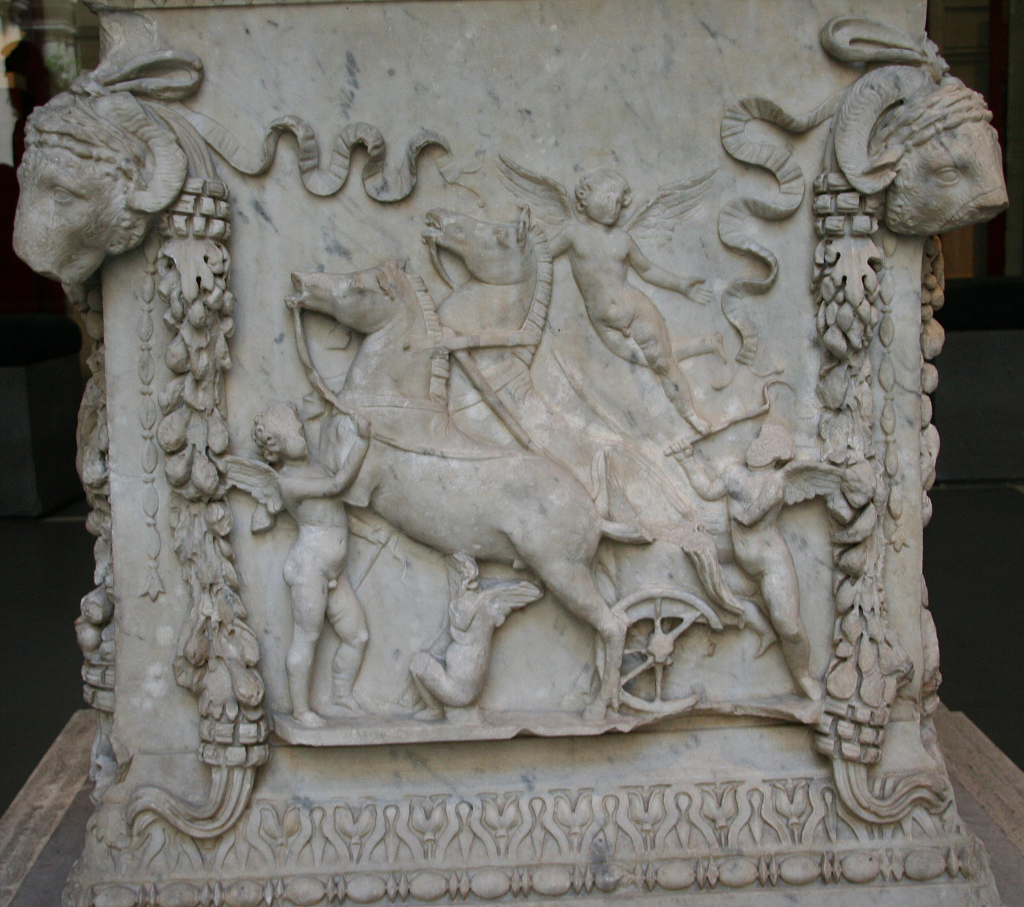
Amorini and the chariot of Mars on one of the sides.
Photo: Klaus Heese.

The inscription of Publius Aelius Syneros and his sons.
Photo: Klaus Heese.

The dedication to a Genius above the previous inscription.
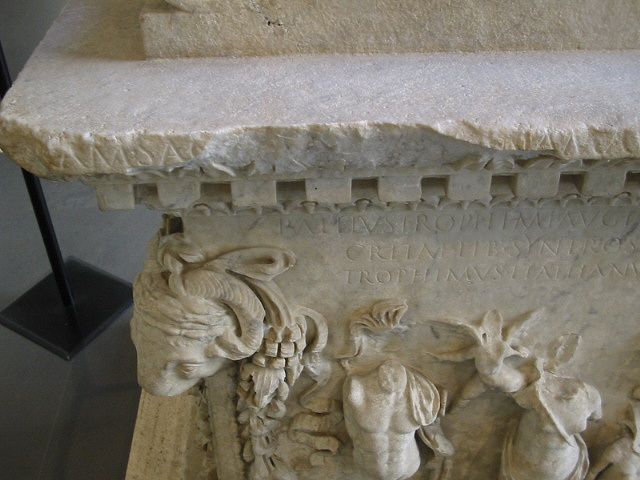
Inscriptions on the front side, left. Photo: Jan Theo Bakker.
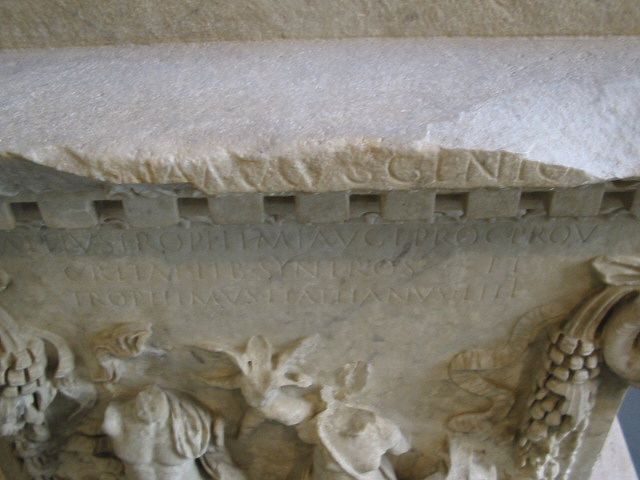
Inscriptions on the front side, centre. Photo: Jan Theo Bakker.
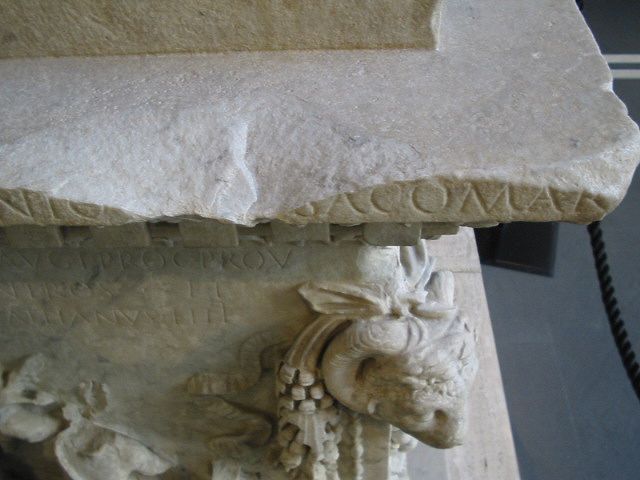
Inscriptions on the front side, right. Photo: Jan Theo Bakker.

The inscription for Silvanus.
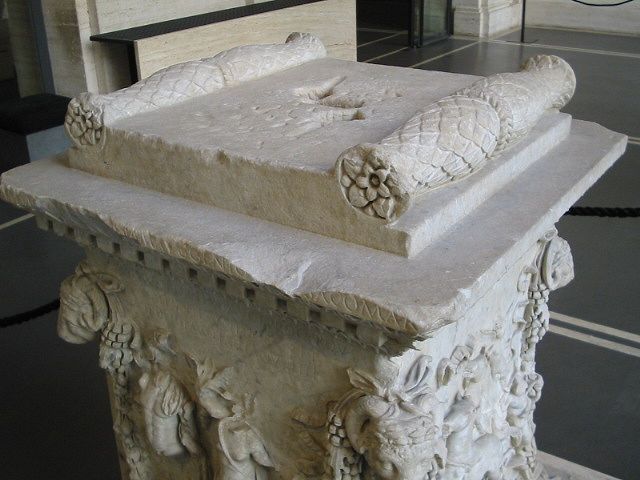
Top of the altar. Photo: Jan Theo Bakker.
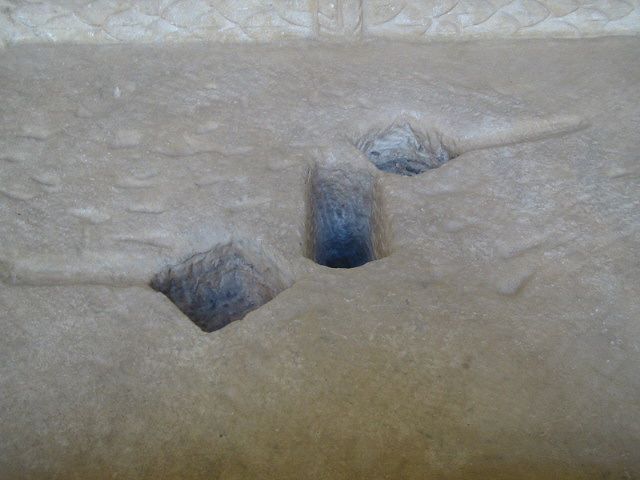
Top of the altar, detail. Photo: Jan Theo Bakker.
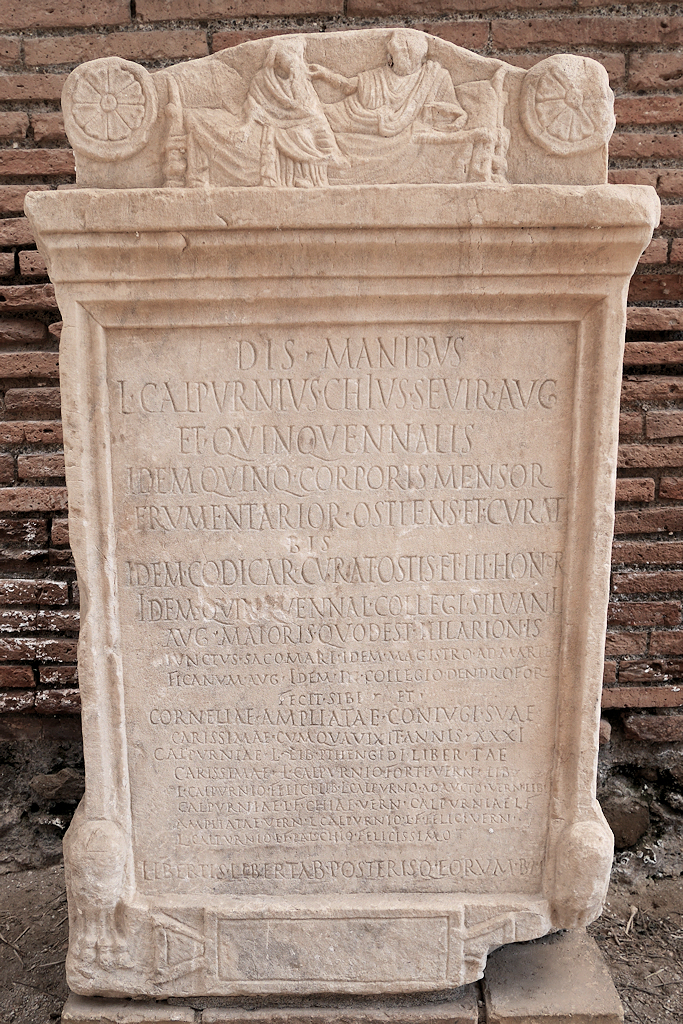
Funerary altar of Lucius Calpurnius Chius.
Second century AD. EDR148068. Photo: Jan Theo Bakker.
|
DIS MANIBVS L(ucius) CALPVRNIVS CHIVS SEVIR AVG(ustalis) ET QVINQVENNALIS IDEM QVINQ(uennalis) CORPORIS MENSOR(um) FRVMENTARIOR(um) OSTIENS(ium) ET CVRAT(or) BIS IDEM CODICAR(iorum) CVRAT(or) OSTIS ET III HONOR(atus) IDEM QVINQVENNAL(is) COLLEGI(i) SILVANI AVG(usti) MAIORIS QVOD EST HILARIONIS IVNCTVS SACOMARI IDEM MAGISTRO AD MARTE(m) FICANVM AVG(ustum) IDEM IN COLLEGIO DENDROFOR(um) FECIT SIBI ET CORNELIAE AMPLIATAE CONIVGI SVAE CARISSIMAE CVM QVA VIXIT ANNIS XXXI CALPVRNIAE L(uci) LIB(ertae) PTHENGIDI LIBERTAE CARISSIMAE L(ucio) CALPVRNIO FORTI VERN(ae) LIB(erto) L(ucio) CALPVRNIO FELICI LIB(erto) L(ucio) CALPVRNIO ADAVCTO VERN(ae) LIB(erto) CALPVRNIAE L(uci) F(iliae) CHIAE VERN(ae) CALPVRNIAE L(uci) F(iliae) AMPLIATAE VERN(ae) L(ucio) CALPVRNIO L(uci) F(ilio) FELICI VERN(ae) L(ucio) CALPVRNIO L(uci) F(ilio) PAL(atina) CHIO FELICISSIMO LIBERTIS LIBERTAB(us) POSTERISQ(ue) EORVM B(ene) M(erentibus) |